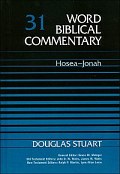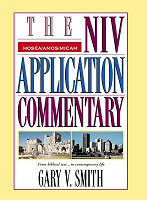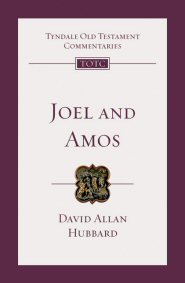Best Resources on Amos
The prophet Amos rebukes injustice wherever it is found—even among God’s chosen people. Amos mostly presents oracles of judgment and disaster, but these end with a promise: After judgment, God will restore Israel. Amos calls on God’s people to repent of their sin against him and others.
Although Amos appears toward the middle of the Prophetic Books, he is likely the earliest of the “writing prophets” (that is, prophets who have biblical books named after them). Amos came from the town of Tekoa in Judah and had a brief prophetic ministry directed at the Northern Kingdom of Israel during the reigns of King Jeroboam II in Israel and King Uzziah (Azariah) in Judah (the Southern Kingdom). Both kings reigned from the 780s to the 740s. Amos’ ministry probably dates somewhat later in their reigns, perhaps sometime between 760 and 750 BC.
—Faithlife Study Bible, Lexham Press
Best Commentaries on Amos
Douglas Stuart, Word Biblical Commentary (WBC), Thomas Nelson, 1987, 588 pp.
Study the books of Hosea, Joel, Amos, Obadiah, and Jonah, with pioneering Old Testament scholar Douglas Stuart. Heartbreaking, strange, and hopeful stories, these books are among the Bible’s most misunderstood. Stuart illuminates their meaning by examining their historical context and unlocking their mysterious stories and prophecies.
- Level: Advanced
- Type: Technical
Shalom M. Paul, Hermeneia, Fortress Press, 1991, 440 pp.
Shalom M. Paul’s work makes extensive use of ancient Near Eastern sources and employs medieval Jewish exegesis along with modern Israeli biblical scholarship. A fantastic study of the book of Amos.
- Level: Advanced
- Type: Technical
Gary V. Smith, NIV Application Commentary (NIVAC), Zondervan, 2001, 608 pp.
Scratch beneath the surface of today’s culture and you’ll find we’re not so different from ancient Israel. True, our sophistication, mobility, and technology eclipse anything the Israelites could have imagined. Our worship is far different, to say nothing of our language and customs. Yet if the prophets Hosea, Amos, and Micah were to visit us today, we might be shocked to see how little their messages would differ from the ones they delivered 2,800 years ago. Revealing the links between Israel in the eighth century BC and our modern world, Gary V. Smith shows how the prophetic writings of Hosea, Amos, and Micah speak to us today with relevance and conviction.
- Level: Intermediate
- Type: Devotional
Billy K. Smith and Frank S. Page, New American Commentary (NAC), B&H, 1995, 289 pp.
This is a volume on three of the minor prophet books of the Old Testament. Billy K. Smith and Frank S. Page seek to bring the message of these prophets alive and applicable to 21st century readers while also studying the context of the message to its first hearers. In congruence with other volumes in The New American Commentary series, this volume brings to light the theological significance of these seemingly insignificant minor prophets.
- Level: Intermediate
- Type: Expository
David A. Hubbard, Tyndale Old Testament Commentaries (TOTC), InterVarsity Press, 1989, 196 pp.
This commentary on Joel and Amos is a valuable guide to the fascinating and challenging word of these two prophets. Ever mindful of the wider context and composition of these ancient but living texts, David Hubbard shows how Joel and Amos addressed Israel's mind and heart.
- Level: Basic
- Type: Devotional
Best Books on Amos
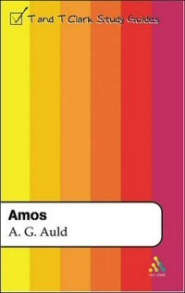
T&T Clark Study Guides: Amos
The contents of this introduction do not mirror the progression of the themes of the book of Amos itself. The reader starts near the end with reports of Amos’ visions and the question of his status and moves to Israel in the context of its neighbors. The reader is then invited to turn to a more general discussion of literary issues in Amos. Only then is the familiar starting point of Amos’ social and religious critique handled, while a final chapter assesses the wider religious and theological significance of the book.
Learn more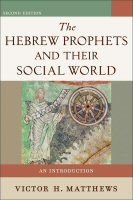
Hebrew Prophets and Their Social World: An Introduction, 2nd ed.
Victor Matthews, a veteran teacher and expert on the world of ancient Israel, introduces students to the Hebrew prophets and their social world. Drawing on archaeology and ancient Near Eastern texts, Matthews examines the prophets chronologically, placing them and their message into historical context. He explores pertinent aspects of historical geography, economic conditions, and social forces that influenced a prophet’s life and message and explains why prophets served an integral purpose in the development of ancient Israelite religion. He also explores how prophets addressed their audience and employed rhetorical methods, images, and metaphors to communicate effectively. Logically organized, clearly written, and classroom friendly, this book meets the needs of beginning as well as advanced students. It is a substantially revised and expanded edition of the successful Social World of the Hebrew Prophets.
Learn more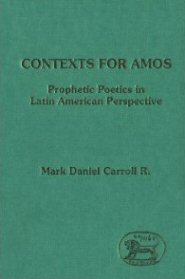
Contexts for Amos
Mark Daniel Carroll R's book views Amos 3–6 in terms of biblical study and theological reflection, with particular emphasis on cultural context. Carroll seeks to describe the role of the prophetic biblical voice and makes the point that we should question, not blindly follow, those who speak for God in society.
Learn more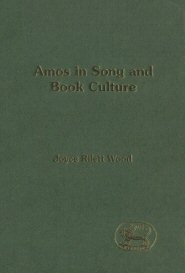
Amos in Song and Book Culture
Amos in Song and Book Culture argues that the gist and movement of the prophecy in the book of Amos can be attributed to Amos himself, who composed a coherent cycle of poetry. His dire predictions came after the fall of Samaria but before the fall of Jerusalem. Writing a century later, the author of the book preserved but updated Amos’ text by fitting it into a developing literary, historical, and prophetic tradition. Amos is used as a test case to show that prophecy originated in the performing arts but was later transformed into history and biography. The original prophecy is a song Amos recited at symposia or festivals. The book’s interest focuses on the performer and his times.
Learn more
The Theology of the Land in Amos 7–9
In the book of Amos, the language about land is used extensively, including terms and ideas such as Zion, YHWH’s bringing of Israel into the land, references to various sanctuaries and places, harvest and famine, the relationship between the Northern Kingdom and Judah, and references to the land of other nations. However this subject of the land has never been studied as a theological topic in its own right but only as part of other themes. This work follows a synchronic reading of Amos, and employing textual, literary, and historical criticism, the author carries out a careful theological analysis of the land.
Learn moreBest Courses on Amos
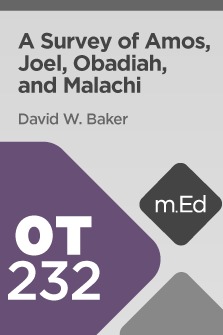
Mobile Ed: OT232 A Survey of Amos, Joel, Obadiah, and Malachi (4 hour course)
Dr. David Baker starts his discussion of the background, themes, and structures of the Minor Prophets with Amos. By highlighting specific poetic devices, he illuminates the prophet’s message and its relevance for today. Dr. Baker also surveys the books of Obadiah, Joel, and Malachi—always emphasizing how you can apply the prophetic wisdom of God’s Word to modern life. Through the prophets, God teaches us to build community, maintain covenant relationships, handle hardships, and more.
Learn more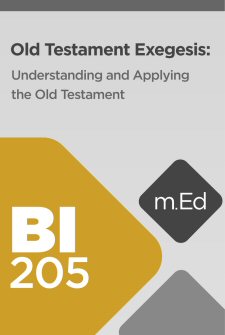
Mobile Ed: BI205 Old Testament Exegesis: Understanding and Applying the Old Testament (15 hour course)
Embark on a journey of OT Hebrew exegesis with Jason DeRouchie. The books of the OT were the only Scriptures Jesus had. It was books like Genesis, Deuteronomy, Isaiah, and Psalms that shaped Jesus’ upbringing and guided his life in ministry as the Jewish Messiah. It was these Scriptures Jesus identified as God’s Word and that he considered to be authoritative; it was these Scriptures he believed called people to know and believe in God and guarded them against doctrinal error and hell. This course will give you the tools you need to access meaning in the OT, then apply it to your life. It will help you to grow in reading God’s living Word for depth and not just distance.
Learn more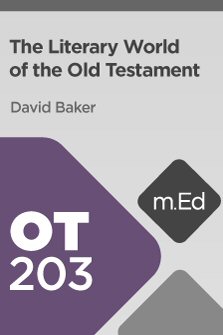
Mobile Ed: OT203 Literary World of the Old Testament (6 hour course)
Join David W. Baker on a whirlwind tour to explore the Old Testament from many different angles and how it relates to ancient Near Eastern literature. From creation accounts and stories of destruction to Wisdom Literature, discover different biblical literary genres that have parallels in ancient Near Eastern literature. Explore extrabiblical historical texts that mention key events and figures from the Old Testament. Understand how Israel fits into and is impacted by its ancient Near Eastern environment but also how it is separate and unique, mainly on a theological level, but also by its distinct worldview.
Learn more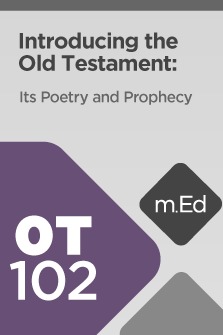
Mobile Ed: OT102 Introducing the Old Testament: Its Poetry and Prophecy (6 hour course)
This course provides a practical foundation for reading the poetry and prophecy of the Old Testament. Dr. David Baker begins by discussing poetic writing in general, then the elements specific to both Hebrew and English poetry. Applying these elements to the text, he examines the content, structure, and themes of the Psalms, Proverbs, Lamentations, Job, Ecclesiastes, and the Song of Songs. Dr. Baker then turns to the Prophetic Books, providing historical background, theological motifs, and the structure and content of specific books. He shows that these ancient messages remain relevant in modern life.
Learn more